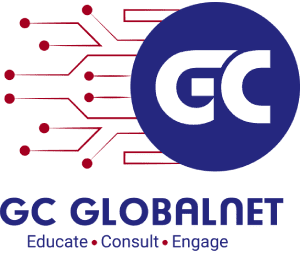Twitter Feed
Cloud computing: A data-centric business model
According to the National Institute of Standards and Technology: “Cloud computing is a model for enabling ubiquitous, convenient, on-demand network access to a shared pool of configurable computing resources (e.g., networks, servers,…
John Mayer At Dell World 2015!! (Oh, I’ll be there too.)
An artist who defies all boundaries, John Mayer has won seven Grammy Awards and sold more than 17 million albums worldwide. The singer, songwriter and guitarist’s skills have been widely…
Data-centric Security: The New Must Have
Where is your data right now? The explosion of cloud computing and consumer IT means that your data, as well as data about you, can be virtually anywhere.Having your data and the…
Personal email:Pathway to Cybersecurity Breaches
As a business communications tool, email is the dominant option, and many corporations have policies that allow the use of personal email on corporate computers. In a recent Adobe Systems…
IEEE Cloud Computing: Legal Clouds
The new issue of IEEE Cloud Computing is now available! This special issue looks at how to balance privacy with legitimate surveillance and lawful data access. Some of the…
Cloud hosting: Look beyond cost savings and weigh pros, cons
Is your company struggling with the idea of using “cloud hosting” in order to save money? Truth be known, using cost savings as the primary reason for moving to cloud…
“Cloud First” Lessons Learned from ViON
In 2011, then United States CIO Vivek Kundra released the US Federal Cloud Computing Strategy [1]. In the executive summary he pointed to cloud computing as a key component of…
Looking for Security Peak Performance?
You can find it at Dell Peak Performance 2015!!! I’ll be there at the Aria Resort and Casino in Las Vegas attending as a social media correspondent with a full…
The Cybersecurity Sprint: Are we safe yet?
UPDATE: NBC News reports U.S. officials have disclosed a hack of the Pentagon’s Joint Staff unclassified email system, which took place on July 25. Recent unauthorized access to a U.S. government database…
Cloud Computing + Things = “Information Excellence”, Not IoT
The Internet of Things (IoT) has quickly become the next “be all to end all” in information technology. Touted as how cloud computing will connect everyday things together, it is…
- It will take, on average, 18-24 months for most agencies to redirect funding to support this transition, given the budget process.
- Some up-front investment will be required, even for agencies seeking to take advantage of public cloud options.
- Implementations may take several years, depending on the size of the agency and the complexity of the cloud model it selects (i.e., public, private, or hybrid).
- It could take as long as 4 years for the accumulated savings from agency investments in cloud computing to offset the initial investment costs; this timeframe could be longer if implementations are improperly planned or inefficiently executed.
Final recommendations are:
- OMB, GSA, and other organizations, such as National Institute of Standards and Technology (NIST), should provide timely, well-coordinated support-in the form of necessary standards, guidance, policy decisions, and issue resolution-to ensure agencies have the necessary tools to efficiently plan and carry out migrations to cloud environments. As the length of the migration period increases, the potential economic benefits of the migration decrease.
- OMB and GSA should seek to identify those agencies with the highest near-term IT costs and expedite their migration to the cloud.
- To encourage steady progress, OMB should establish a combination of incentives and disincentives; e.g., consider allowing agencies to retain a small percentage of any savings realized from cloud computing for investments in future initiatives. To monitor progress and heighten transparency and accountability, OMB could incorporate cloud-related metrics into the new government-wide IT dashboard.
- Agencies should consider which of the high-level scenarios described in this article best suits their needs, with the understanding that regardless of scenario chosen, proper planning and efficient execution are critical success factors from an economic perspective.
- Given the significant impact of scale efficiencies, agencies selecting a private cloud approach should fully explore the potential for interdepartmental and interagency collaboration and investment (consistent with emerging OMB and GSA guidance). This, in effect, leads to the fourth cloud deployment model-the community cloud. A community cloud is a collaboration between private cloud operators to share resources and services.
- Agencies should identify the aspects of their current IT workload that can be transitioned to the cloud in the near term to yield “early wins” to help build momentum and support for the migration to cloud computing.
Definitely a must read !!
( Thank you. If you enjoyed this article, get free updates by email or RSS – KLJ )
![]()
![]()
Cloud Computing
- CPUcoin Expands CPU/GPU Power Sharing with Cudo Ventures Enterprise Network Partnership
- CPUcoin Expands CPU/GPU Power Sharing with Cudo Ventures Enterprise Network Partnership
- Route1 Announces Q2 2019 Financial Results
- CPUcoin Expands CPU/GPU Power Sharing with Cudo Ventures Enterprise Network Partnership
- ChannelAdvisor to Present at the D.A. Davidson 18th Annual Technology Conference
Cybersecurity
- Route1 Announces Q2 2019 Financial Results
- FIRST US BANCSHARES, INC. DECLARES CASH DIVIDEND
- Business Continuity Management Planning Solution Market is Expected to Grow ~ US$ 1.6 Bn by the end of 2029 - PMR
- Atos delivers Quantum-Learning-as-a-Service to Xofia to enable artificial intelligence solutions
- New Ares IoT Botnet discovered on Android OS based Set-Top Boxes

